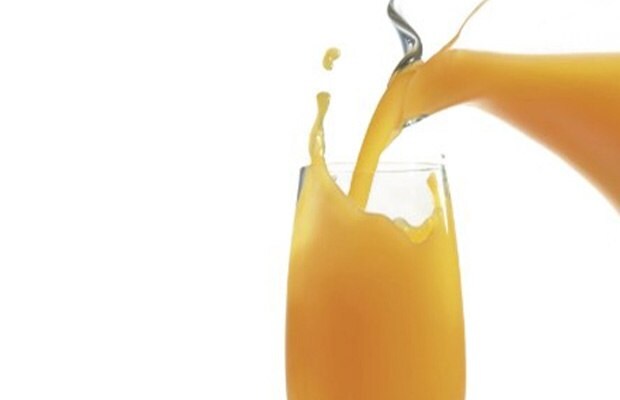Nitrate in Fruit Juices
Smartphone-based determination of nitrate after reduction to nitrite and reaction with Griess reagent

Introduction
Nitrate occurs naturally in fruits and consequently in food and beverages produced from fruits. Nitrate is absorbed from the soil by the roots and is predominantly stored in the roots and the leaves. In contrast to vegetables the nitrate content in fruits is usually low (< 10 mg/L).1
Nitrate itself is not toxic but it can be metabolized in the body to nitrite, which in turn can form cancerogenic nitrosamines. This can make nitrate very dangerous, especially for babies.1
To ensure a low nitrate concentration in your fruit juices, the nitrate content can be checked with the MQuant® test strips using your smartphone for fast, convenient, and precise results. Test the simplest way to determine Nitrate in aqueous solutions. This low-priced and easy-to-use analytical detection system provides reliable quantification of water, food & beverage samples for customers from research, industry, environment and diagnostics.
The following application note describes the determination of nitrate concentrations in fruit juices using the MQuant® Nitrate test strips in combination with the MQuant® StripScan app.
Experimental Method
Nitrate ions are reduced to nitrite ions by a reducing agent. In the presence of an acidic buffer, these nitrite ions react with an aromatic amine to form a diazonium salt, which in turn reacts with N-(1-naphthyl)-ethylene-diamine to form a red-violet azo dye.
- Sample material
Fruit juices - Measuring range
0–500 mg/L NO3-
Reagents and Accessories
Reagents
- MQuant® Nitrate Test, colorimetric with test strips (1.10020)
- Polyvinylpolypyrrolidone Divergan® RS (1.07302)
Accessories
- MQuant® Card (provided with the test strip box)
- MQuant® StripScan App (can be downloaded via Apple App Store or Google Play Store)
- Nitrate-free folded filter (e.g. Whatman® pre-pleated qualitative filter paper, Grade 595 ½, WHA10311645)
Sample preparation
The quantity, type, and reaction time of the Divergan® RS used are of major influence in the decolorizing process. We recommend the following procedure:
Decolorization of sample:
- Add approx. 0.5 g Polyvinylpolypyrrolidone Divergan® RS to 10 mL of sample.
- Mix thoroughly for approx. 1 minute and filter through a nitrate-free folded filter.
- Instead of filtering the solution, the Divergan® RS can be allowed to settle and the test strip dipped into the supernatant solution.
Measurement:
For analysis, follow this procedure:
- Start the app.
- Get your MQuant® test strip and the MQuant® Card ready.
- Dip the test strip into the prepared sample (15–25 °C) for approx. 2 seconds, ensuring that the reaction zones are completely immersed.
- Shake off excess liquid from the strip and dry the backside of the strip using a paper towel.
- Select the parameter NO3- (1.10020) in the app. A 60 second countdown is displayed on the screen, which begins immediately after selecting the parameter NO3-.
- Just before the end of the countdown, place the test strip on the MQuant® Card.
- After the waiting time is elapsed, place the MQuant® Card with the test strip within the viewfinder on your phone screen, and align the camera along the reference points.
- The picture is captured automatically by the camera of the smartphone.
- The result is displayed on the screen in mg/L NO3-.
Results
Comparison with visual evaluation and Reflectoquant® Nitrate Test.
The results were verified by performing a reference analysis with the Reflectoquant® Test (1.16995). The measurements with the Reflectoquant® test were performed according to the corresponding package insert. The results when evaluating the MQuant® test strips visually were documented for comparison.
In addition, spiking experiments were performed. For this purpose, the samples were spiked with 20 mg/L NO3- before decolorization and the recovered concentration was determined.
The results are shown in the following Table 1.
Conclusion
The MQuant® Nitrate test strip in combination with the MQuant® StripScan app is a quick and easy way to analyze the nitrate concentration in fruit juices. The spiking experiments showed a good recovery rate. The values are comparable to those measured with the Reflectoquant® test and visual evaluation.
As always, (whenever trying a new method of analysis) it is recommended to do plausibility checks and compare the results with a reference method.
For more information
- MQuant® StripScan see SigmaAldrich.com/mquant-stripscan
- MQuant® Test Strips see SigmaAldrich.com/mquant
- Applications see SigmaAldrich.com/wfa-applications
References
To continue reading please sign in or create an account.
Don't Have An Account?